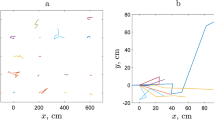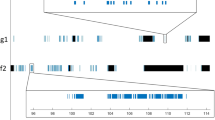Abstract
YONGE1 states that “limpets move about when the tide is in and is not very rough, but they also do so to some extent when exposed if the rock is damp and the sun not too hot”. At Dale (south-west Pembrokeshire) in July 1968 we saw Patella vulgata move more frequently at low tide, when the animals were uncovered, than at high tide. Furthermore, movement occurred more often in the late evening and during the night than in the daytime.
This is a preview of subscription content, access via your institution
Access options
Subscribe to this journal
Receive 51 print issues and online access
$199.00 per year
only $3.90 per issue
Buy this article
- Purchase on Springer Link
- Instant access to full article PDF
Prices may be subject to local taxes which are calculated during checkout
Similar content being viewed by others
References
Yonge, C. M., The Sea Shore (Collins, London, 1949).
Ballantine, W. J., Field Studies, 1 (3), 1 (1961).
Author information
Authors and Affiliations
Rights and permissions
About this article
Cite this article
DEARNALEY, R., MAR, C., PARR, M. et al. When Limpets Move. Nature 221, 491–492 (1969). https://doi.org/10.1038/221491a0
Received:
Issue Date:
DOI: https://doi.org/10.1038/221491a0
Comments
By submitting a comment you agree to abide by our Terms and Community Guidelines. If you find something abusive or that does not comply with our terms or guidelines please flag it as inappropriate.



